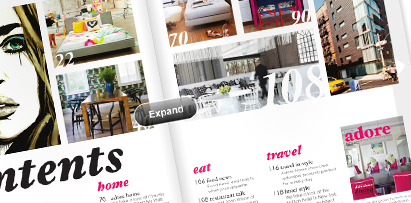 Magazine publishers. The hype, the iPad, the excitement. Was this the device their savior into the online publishing realm? Excitement was in the air, Time Magazine and a lot of the bigger publishers spent big to getting their monthly consumer publications converted into an App, to enter the Apple App store.
Magazine publishers. The hype, the iPad, the excitement. Was this the device their savior into the online publishing realm? Excitement was in the air, Time Magazine and a lot of the bigger publishers spent big to getting their monthly consumer publications converted into an App, to enter the Apple App store.
Months in, the excitement dissolved. Apple had failed to offer the digital stage they needed to snatch back some of the revenue stolen over the last ten years. The glossy cover, the full page ad, the dollars. All of this they thought the iPad could promise and more.
Three years in and not a lot has changed, there are a few Magazine distribution networks like Zino, and iTunes often requires you download entire magazines (bandwidth heavy) within the app on your iPad. When you’ve finished reading you either leave them there, or delete them from within the program. If you delete them, you can download them again later. A big problem is if you want them on the desktop or laptop, you need to download the Zinio app for your OS and re-download the magazines.
The publishers are in a bottleneck. They can’t cost effectively create an experience on the iPad that is efficient and accessible for the magazine industry and still create a profit from adverts.
Believe it or not, Facebook is facing a similar problem at the moment as mobile slowly takes over the desktop version, in the question on how to monetize their services on mobile devices.
Even still, publishers should be inspired by what Apple did to beat off music piracy by creating a distribution channel that could not be matched, enabling accessibility and ease-of-use and delivery, micro payments and downloading over 3G/4G networks.
But why can’t glossy magazine publishers break their market?
The Platform.
Magazine publishers have failed to break the tablet market because of the following factors:
– they are locked into platforms (iTunes, Zinio) which require download of the entire magazine before viewing which is time consuming, costly, and also cannot be viewed on desktops or laptops once purchased.
– they are stuck in traditional layouts of static full page advertisements, page by page real life flipping animations.
– they are stuck in the thinking that magazines should follow a traditional feature-advert-feature storyline.
– magazine publishers have not enabled their content to take full advantage of digital elements, and goal conversions.
– micro payments are non-existent.
Even forgetting iPad’s and mobile tablets for the moment, most consumer glossy magazines’ web presence comes in the form of an online news website, or the online blog. What they are finding now is that they can’t pull in the same revenue that they once did, because they are competing with millions of online blogs, who can all provide a similar experience.
What they should do:
Consumer titles need to start thinking outside of the square. Instead of positioning themself as a news/blog website (like vogue.com.au for example), most should start to position themselves as an online experience, much like they once were in the real world.
With the advance in various programming languages, design evolution and HTML5, and jQuery there are a number of custom solutions that can be developed for these companies to put them in the forefront for an online magazine experience.
Also, by using these new languages (that are around 90% compatible – with adjustments 100%) with earlier web browsers, previous versions of the iPad, Kindle Fire, PDA phones, laptops and desktops. This is a solution that delivers to multiple-channels instead of having to spend on development costs for each different device.
It would also bypass the need to rely on resellers like Zinio and Apple.
Obviously this would work best in a situation where there is no charge for viewing the magazine, but consumers are prepared to pay for unique content, and there are several new revenue opportunities available via interactive, engaging advertisements or e-commerce embedded features to allow instant purchases.
Let’s use the example an advertisement for a fashion product. Maybe from the latest look-book can be linked directly to the e-commerce website to convert an immediate sale. This beats traditional media, which may build brand awareness but doesn’t enable the purchase at the advertisement.
The E-commerce element could also be embedded into the advertisement, allowing the user to “add to cart” from the advertisement.
You would have your monthly magazine, converted into an online experience better than anything you could imagine, with benefits including:
– table of contents to organise a logical order of features
– accessible in an intuitive format
– interactive online advertisements
– direct e-commerce channels
– fast load times, (content is only loaded based on user tracking and preferences)
– Real time metrics to measure engagement.
The best thing about this is it is all possible now.
If you would like to discuss this further please contact alex@krafthaus.com.au
Alex Boston on Google+


